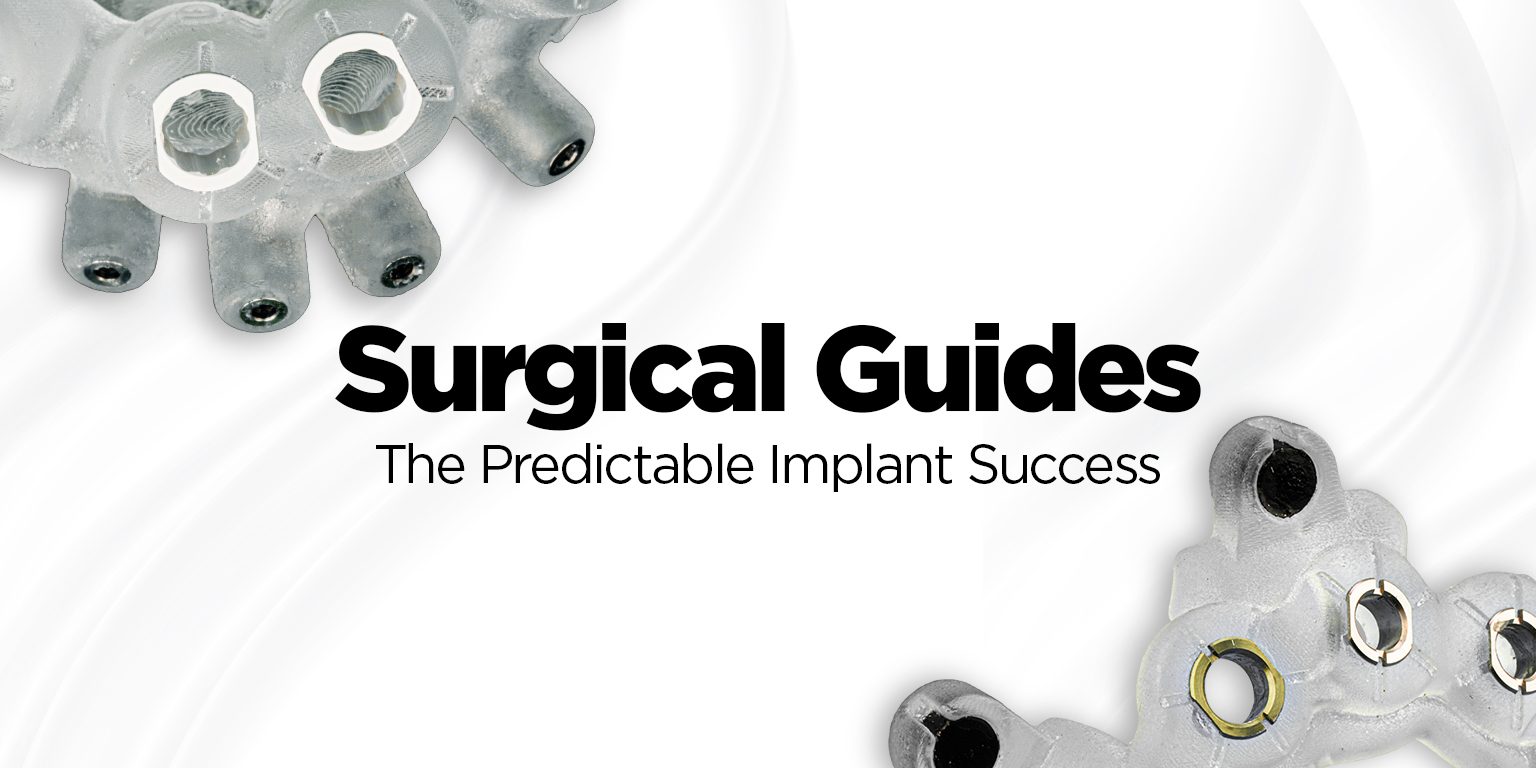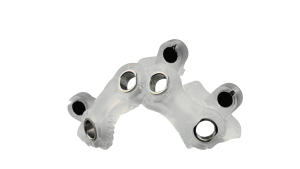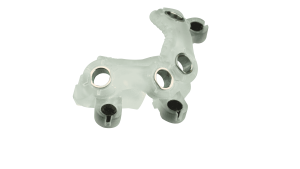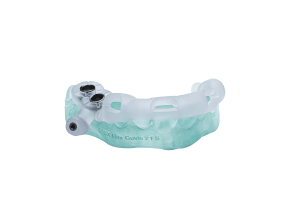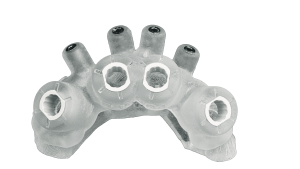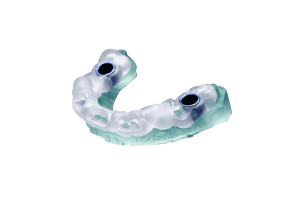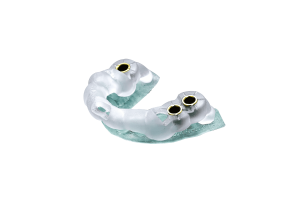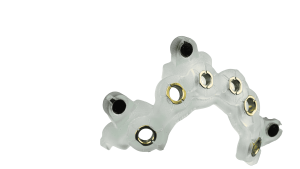Surgical Guides: The Key to Predictable Implant Success
The Precision Problem in Implantology
Every dental implant case is unique. Yet, many clinicians still rely on freehand techniques or generic templates that increase the risk of:
- Improper implant angulation
- Inaccurate positioning
- Surgical complications
- Esthetic and functional failures
In a discipline where micrometers matter, precision is non-negotiable.
This is where surgical guides become essential tools, ensuring that every implant is placed exactly where it needs to be — the first time.
What Are Surgical Guides and Why Do They Matter?
Definition of Surgical Guides
A surgical guide is a custom-fabricated device designed to direct the surgical instruments used during implant placement. Based on patient-specific digital data (CBCT, IOS), these guides control:
- Position
- Angulation
- Depth
From Virtual Planning to Clinical Reality
- Prosthetic-driven design ensures implants align with the final restoration.
- Digital workflows eliminate guesswork.
- 3D-printed guides offer physical control during surgery.
Types of Dental Surgical Guides Explained
Understanding the dental surgical guide types helps select the right solution for each clinical scenario:
- Tooth-Supported Surgical Guides
- Stabilized by existing teeth.
- Ideal for partially edentulous patients.
- High accuracy and simple placement.
- Tissue-Supported Surgical Guides
- Rest on soft tissue.
- Used in fully edentulous cases (All-on-X, All-on-4).
- Require fixation pins for stability.
- Bone-Supported Surgical Guides
- Placed directly on bone after flap reflection.
- Essential for severe bone resorption cases.
- Preferred in complex surgeries.
- Hybrid Surgical Guides
- Combine tooth, mucosa, or bone support.
- Provide maximum stability in anatomically challenging cases.
Why You Should Use Surgical Guides in Your Practice
Key Benefits of Surgical Guides
- Enhanced Accuracy & Predictability
- Reduced Surgical Time & Stress
- Minimized Risk of Complications
- Improved Prosthetic Outcomes
- Higher Patient Satisfaction & Case Acceptance
Clinical Scenarios Where Surgical Guides Excel
- Full-arch restorations (All-on-X)
- Limited bone availability
- Aesthetic zone implants
- Complex anatomical challenges (nerve proximity, sinus floor elevation)
3DDX Surgical Guides: Your Partner in Precision
At 3DDX, we offer end-to-end solutions for surgical guides:
- Advanced CBCT-based planning
- Prosthetically-driven design workflows
- Custom guide fabrication with high-precision 3D printing
- Support for all dental surgical guide types (tooth, mucosa, bone, hybrid)
Why Clinicians Choose 3DDX
- Trusted by specialists nationwide
- Quick turnaround times
- Dedicated technical support
- Seamless digital workflow integration
3DDX In-House Dentists and Restorative Specialists:
One of the key differentiators of working with 3DDX is the direct collaboration with our in-house team of dentists, implant planners, and restorative designers.
Unlike generic guide manufacturers, 3DDX provides:
- Clinically-trained planning specialists who understand the surgical and prosthetic goals of each case
- Restorative-driven design led by dental professionals—not just engineers—ensuring final outcomes align with esthetics, occlusion, and soft tissue health
- Real-time communication with clinicians, giving you fast feedback, adjustments, and clinical insight throughout the workflow
This comprehensive, in-house collaboration allows us to anticipate common issues—like improper angulation, spacing, or depth—before they become clinical complications, and tailor each guide to your surgical preferences and prosthetic end goals.
How to Submit a Case for a Dental Guide with 3DDX
Submitting a case for a surgical guide is simple:
Step-by-Step Guide
- Upload Your CBCT and IOS Scans
High-resolution images ensure precise planning. - Collaborate on Treatment Planning
Review and approve your custom surgical plan. - Guide Design & Fabrication
3D printing of your surgical guide with exact specifications. - Delivery to Your Practice
Receive the guide, ready for clinical use.
Learn more about Surgical Guides
References
- D’haese J, et al. Guided surgery: accuracy and efficiency in implant placement. Clin Implant Dent Relat Res. 2012;14(2):196-203.
- Vercruyssen M, et al. Guided surgery: accuracy of freehand placement versus use of a surgical guide. Int J Oral Maxillofac Implants. 2014;29(1):56-63.
- Tahmaseb A, et al. Computer technology applications in surgical implant dentistry: A systematic review. Int J Oral Maxillofac Implants. 2014;29(Suppl):25-42.
- Reference: D’haese J, et al. “Guided surgery: accuracy and efficiency in implant placement.” Clin Implant Dent Relat Res. 2012.

 Support
Support FINE-TUNE
FINE-TUNE ORDER SERVICES
ORDER SERVICES PRODUCT SHOP
PRODUCT SHOP 1-866-834-7925
1-866-834-7925